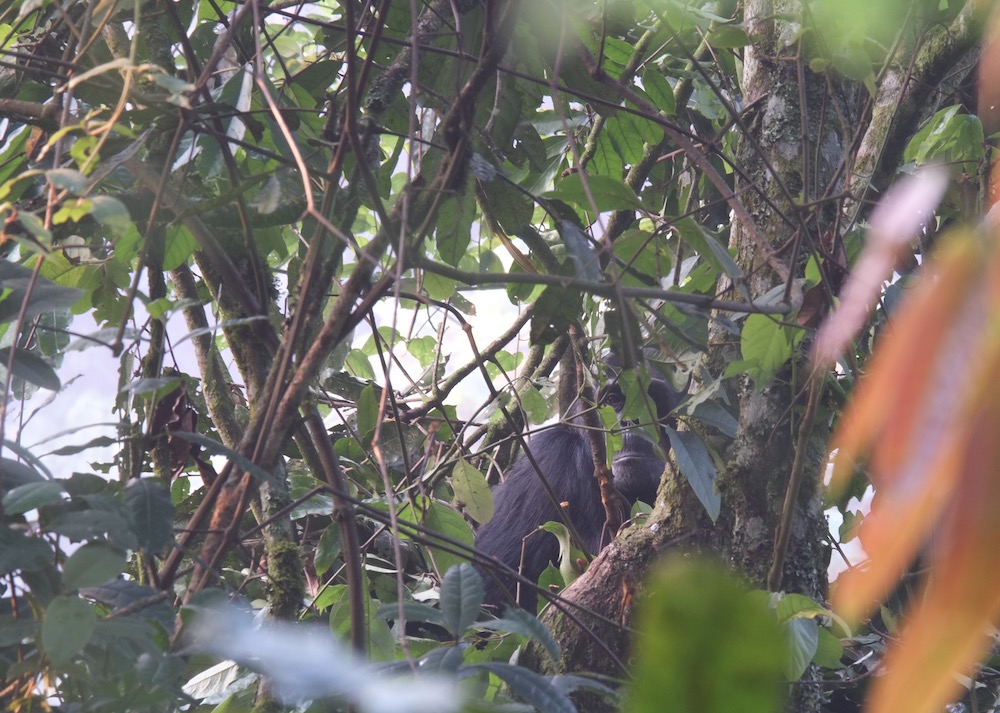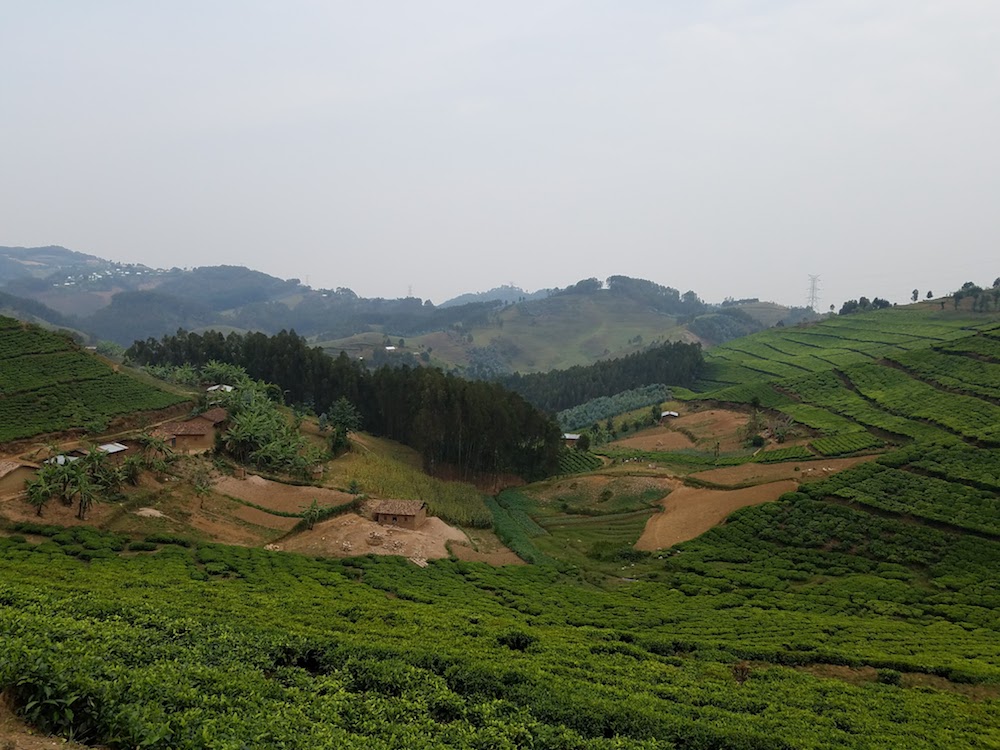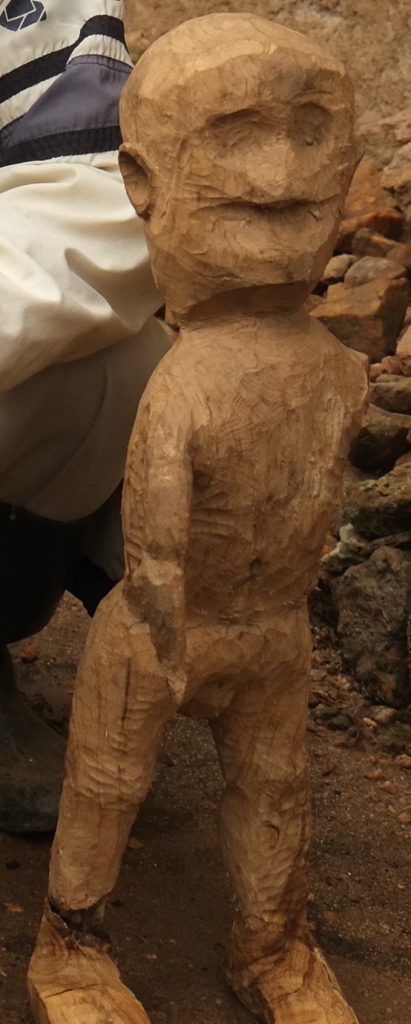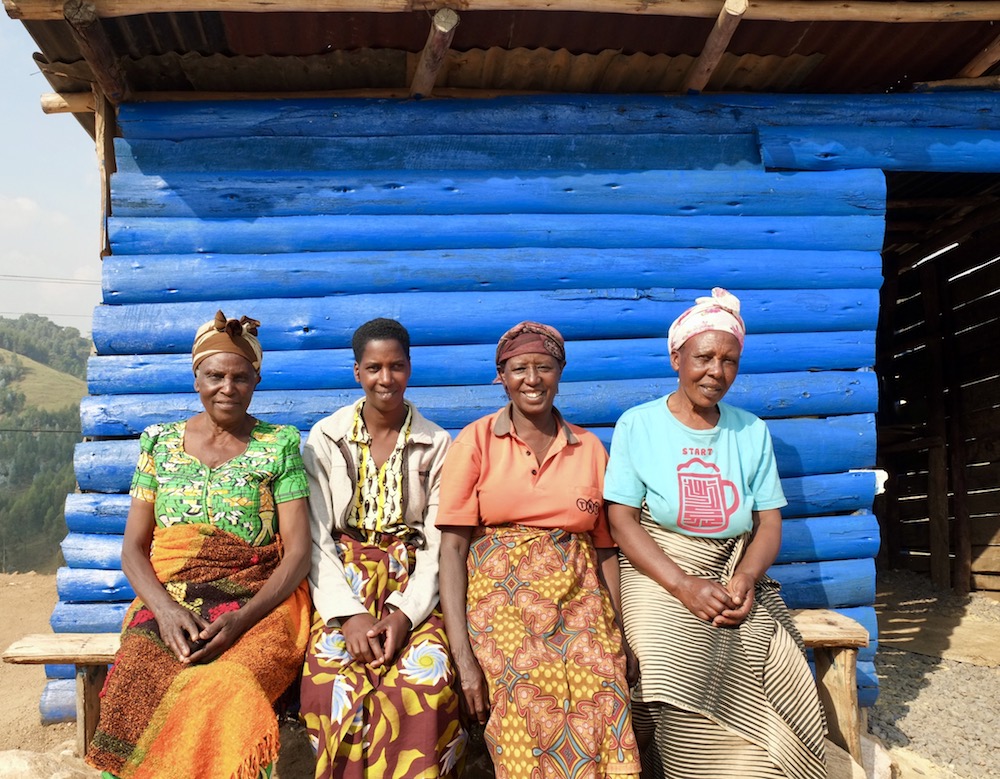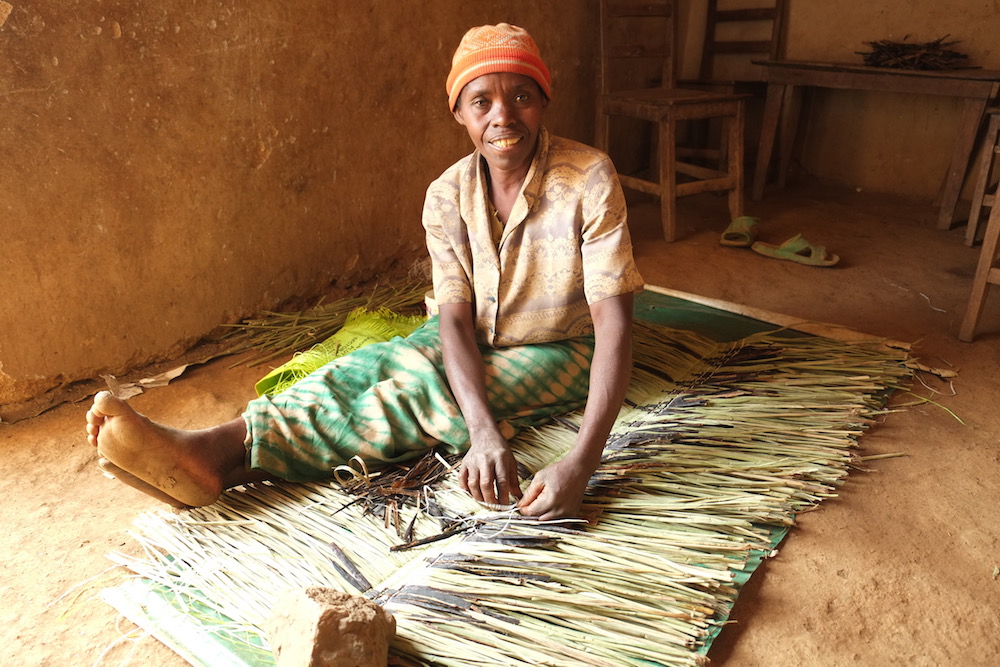The Green Woods of Resilience
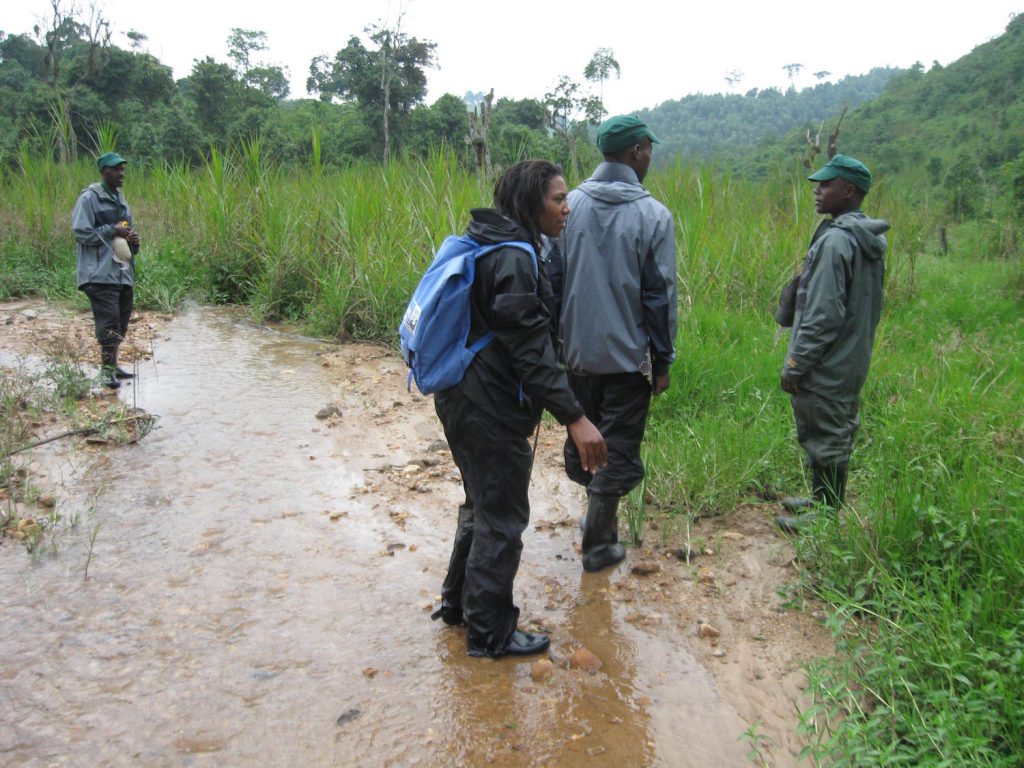
For an endangered species, the chimpanzees of the Gishwati Forest live a life of peace. Free from any predators, feasting on the fruits of myrianthus trees, these primates are blissfully unaware that their existence ensures the protection of this tropical forest in northwestern Rwanda.
One night, my fellow researchers and I observed a group of four chimpanzees building their nests in a tree near the edge of the forest. We were a team of three—two environmental researchers and one chimp tracker—spending months living in a village called Kinihira near Gishwati.
We had left Kinihira at 3:00 in the morning, eager to spend the day in silent observation and awe. We climbed cliffs under the moonlight and traversed unmarked and often unformed trails, cutting through the knotted understory.
When we found them, the chimps received us with annoyance and, finally, reluctant acceptance. When they leapt, we made ourselves small among the ferns. When they rested, we also settled onto the forest floor.
For many researchers in Gishwati, the chimps are an attraction. Their presence—and the possibility of primate-viewing tourism—have helped propel a conservation effort for this forest. Although other tropical forests in Rwanda are famous and oft-visited, celebrated as sites where mountain gorillas thrive or as hotspots of biodiversity, Gishwati has been the troubled child until very recently.
Through the 1990s, government officials and conservation organizations considered the Gishwati Forest degraded to the point of no return. But over the last 20 years, conservation efforts have successfully quadrupled its size to some 1,600 hectares.
This revival—though modest relative to the vast forest that once existed in the region—holds lessons for conservationists the world over. Recently, community advocates have begun to praise Gishwati as a forest of hope—particularly for its resilience in the face of decades of crises and degradation. In 2015, the Rwandan government designated the forest as part of the newly formed Gishwati Mukura National Park, recognizing Gishwati as an area to be conserved and protected.
But conservation stories of Gishwati—like many narratives of environmental protection—have neglected certain perspectives, particularly those of people who live in or alongside conservation areas. I went to Gishwati as a graduate student of environmental anthropology, investigating the history of the forest and the forces that had led to its conservation. When I conducted fieldwork in Gishwati during the summer of 2017, I discovered that these missing perspectives could both nuance and help explain Gishwati’s remarkable successes.
I met with conservationists who’ve spent their careers studying the forest; members of the Batwa community, an Indigenous group; and refugees who settled near the forest after the country’s 1994 genocide. The stories I encountered made it clear that even the most beaten forests can simultaneously hold profound claims of loss and hope. The key to Gishwati’s resilience lay in a path that braided together people’s histories and relationships with the forest—a testament to how forests and people together can adapt and persevere.
A century ago, Gishwati was one of Rwanda’s largest indigenous forests, extending across more than 100,000 hectares, larger than the size of New York City. Conservationists believe that in the 1980s, the forest lost more than half its size due to efforts to establish timber and pine plantations, along with cattle ranching.
Then, in 1994, this forest witnessed the massacre of people from the Tutsi ethnic group, among others, during a period of genocide in Rwanda. The genocide remains a pivotal moment in the country’s history: a conflict during which many people from another ethnic group, the Hutu majority, sought to eradicate the Tutsi ethnic group. Hutu forces slaughtered more than 800,000 people within 100 days. After the genocide, further conflict unfolded when Hutu rebels who had perpetrated the genocide sought to regain control of the country. Some Hutu rebels hid in Gishwati for five years or so.
During the period following the genocide, the forest shrank to 600 hectares—a little less than twice the size of Central Park in Manhattan. Returning refugees, people who had been forced out of Rwanda due to armed conflict and who had returned after the genocide, found respite in Gishwati. They cultivated the land, which required cutting the forest.
I spoke with conservationist Madeleine Nyiratuza about this time while visiting her office in Rwanda’s capital, Kigali. “When I started working in Gishwati [in 2006], it was a forest beyond hope,” she said.
After the genocide, the conservation community and the government did not consider Gishwati a restoration priority, Nyiratuza explained. Their focus lay elsewhere, in larger forests with more biodiversity that would appeal to scientists and tourists. International organizations, the bringers of foreign aid, thought spending resources on conserving the forest would be a waste. “How can we spend money on a few chimpanzees?” Nyiratuza recalls many of them asking.
When Nyiratuza first arrived in Gishwati, she met with returning refugees who had settled nearby and were cutting down trees to clear the land for farming. Almost all of them echoed the sentiment, “This forest is my land.” She saw farm upon farm encroaching upon the remnants of a natural forest—intensely managed landscapes with few traces of wildlife or untouched woods. Gishwati was on its way to becoming a giant cabbage patch.
Nyiratuza understood how closely people were tied to what they considered their land and how their lives depended on it. Whether people were planting eucalyptus trees to use as firewood for cooking, or seeking water and fodder for their cows, the forest was their only resource. The situation was even more complicated by the fact that many of the farmers were returning refugees. They had arrived with nothing after having traveled long distances by foot. Gishwati was a beacon of hope and a chance to rebuild their lives as farmers.
Nyiratuza had a profound realization: She could save the forest by supporting farmers whose livelihoods depended on it, and she could support livelihoods by ensuring that the benefits the Gishwati Forest offered—rain, fresh air, preventing landslides—remained intact.
Nyiratuza’s first step was to mark the territory by organizing community meetings in four villages that surrounded Gishwati. “Everyone who owned land in the forest was present,” she recalled. A first step toward protection of the area was to decide where the forest began and where it ended, and she discussed with farmers where to fix the markers. “Farmers understood why we needed to protect the forest,” she told me.
Another step was to partner with international donors and researchers to fund six eco-guards—men from four villages hired to patrol the forest and educate community members about why Gishwati’s protection is important. Madeleine asked people to elect eco-guards from their own villages to serve as effective representatives of their communities.
Slowly, through education, things have changed. The remaining forest is conserved, the eco-guards have a role, and people’s hopes revolve around improving their livelihoods through tourism in Gishwati. Nyiratuza’s biggest achievement to date is the recognition and acknowledgement of Gishwati as part of a new national park in 2015.
The story of Gishwati’s survival might end there, with the triumphant creation of a national park. But conservation efforts are just one thread in Gishwati’s recent history.
The Batwa are an Indigenous group in Rwanda, a community of hunter-gatherers who used to live in Gishwati and were evicted by the government years ago. After the genocide, the Rwandan government outlawed depictions and expressions of ethnicity to curb divisions between the three ethnic groups of Rwanda: the Tutsi, Hutu, and Batwa. As a result, people are not allowed to use the term “Batwa” in Rwanda to describe this community—instead the government prefers to call them “historically marginalized people.” In this essay, I choose to use the term Batwa so readers outside of Rwanda can track and understand the history of this community. (This community is also known as the Twa.)
The reasons for evicting the Batwa are multifaceted; most explanations revolve around the need to protect Gishwati and a few suggest lingering ethnic discrimination. Even after leaving the forest, many Batwa people continued to rely on it for hunting and fruit gathering, according to my sources.
My research led me to a specific member of the Batwa community, Rukundo (a pseudonym). My interest in speaking with him lay in his knowledge of Gishwati: As a member of the Indigenous group with the most profound and oldest claim on Gishwati, what insight could he offer about the forest’s survival? My translator and I walked through cultivated fields, tea plantations, and over three hills to reach the village where Rukundo lived.
When Rukundo and I finally met, I introduced myself and expressed my interest in his life and the history of Gishwati. He agreed to speak to us. “I’ll talk to you. You have use for this knowledge I have about the forest,” he said. “I have no use.”
I found it strange that Rukondo felt he had no use for his knowledge about the forest. Especially because for the conservationists working in Gishwati to protect the forest and wildlife, Rukundo posed a unique problem.
What insight could a member of the Batwa community—with the oldest claim on Gishwati—offer about the forest’s survival?
He knew too much about the forest. Whatever they did, they couldn’t keep him out of Gishwati. Once the eco-guards found Rukundo following them, and at other times, he would be “discovered” following researchers who were tracking the chimps.
“I go to the forest because I have all these wild animals in my head. I want to see them again so I can make sculptures,” Rukundo told me. “Pottery and sculpture are parts of my culture.”
Sitting together outside his home, his children and neighbors listening in, Rukundo took out dombeya sticks from his one-room house and showed me how people would make fire in the past. Dombeya is a tree commonly found in Gishwati, and in the past, people used parts of the tree for handicrafts, roofs, and firewood. “Now, we don’t need all this. We have matches,” he added.
At times, I felt Rukundo performed for me—acts of Indigeneity such as traditional fire-building that perhaps foreigners (bazungu in the local language Kinyarwanda) had expected from him and even paid for in the past. “Usually when the bazungu come, they buy me something to drink,” he said.
At other times, Rukundo would be surprisingly open about his life and struggles: “You are a researcher. One day my children will be researchers, and I hope no one will ask them to pay!”
Rukundo spoke in terms that suggested he had internalized the sense that his community was somehow outside of typical experience. He spoke of wanting his children to be “ordinary people.” Many Batwa used this phrase to describe people who were farmers rather than forest dwellers. “If my children see me hunt, they will also hunt,” he said. “I want them to speak foreign languages, to study, to cultivate.”
In Rukundo’s view, the Batwa were evicted to protect the chimpanzees in Gishwati so foreign tourists could bring money to Rwanda. Historically, the government evicted the Batwa for forest protection, before tourism in national parks was established in the country. “We would be in the forest if there was no government policy protecting Gishwati,” he said. “We would not be hungry. It was the government’s decision to move us out.”
Rukundo remembers the forest as being “delicious”: “Before the genocide, we had a lot of food in the forest—fruits [and] wild pigs and birds we could hunt,” he said. I asked Rukundo how he manages his household needs now that the forest is protected. He relied on jobs that give him wages, since he doesn’t own any land.
Nyiratuza and other conservationists in Gishwati have tried a different approach with Rukundo. Knowing it was difficult to keep him out of the forest, they hired him to develop trails in Gishwati, offering a steady wage in the hope they could soften his stance toward their goals for the forest.
One day, after a disagreement, the conservationists fired Rukundo. The next day, the eco-guards found him in the forest again, cutting trees and hunting for birds. “I was angry,” Rukundo said. He got his job back and worked for occasional daily wages, continuing to mark trails in Gishwati.
For a member of a group that is denigrated and marginalized, Rukundo is a paradoxical figure. The more time I spent with him, the more details he revealed about his life. While other Rwandans often view the Batwa as powerless, illiterate, and marginalized, Rukundo’s self-perception is anything but that. Rukundo views himself as smart and adaptable, with the ability to make the best out of any situation he finds himself in.
The conservation of forests throughout Africa—and elsewhere—has often meant the exclusion of Indigenous people. Yet in Rwanda, Rukundo exemplifies how even the most marginalized can assert their power and role in conservation, and come to shape the future and vision of a restored forest. His is a story of hope that parallels (and perhaps is paramount to) the hope tied to Gishwati’s revival.
Rukundo laughed often at my Kinyarwanda and remained curious about my research until the last time I met with him: “Of course, I’m interested in knowing what you find,” he said. “If you teach a child, you are curious to know if they will succeed in the future.”
After the genocide, the local government granted forest land from Gishwati to farmers and cultivators, all of them newly returning refugees who cleared the land for farming. These same farmers were among the people that Nyiratuza met and worked with when she began her conservation efforts in 2006. But about a decade later, many of these farmers lost their lands due to a shift in government policy linked to disastrous landslides in the area.
Many people affected by this policy have had to adjust their livelihoods—creating another ripple effect for the people in the story of Gishwati’s revival. The milk sellers, for example, are a group of women who sell milk where the main road crosses the Kinihira village.
I ran into these women every time I crossed the hill and left Kinihira to walk toward the Gishwati Forest. In a freshly painted, blue wooden hut, around six to eight women sit outside the entrance of the village, next to the main road. They always have warm, yellow jerry cans of fresh milk, and they run after any car or bus that stops or passes by the village to sell milk to passengers.
The milk sellers remember that they used to have land in the forest, both for cultivation and grazing. “When we cultivated on land from Gishwati,” one of them told me, “we had maize, Irish potatoes, beans, and yams.” But one day, the leaders took back the land, and the women started their business of selling milk so they wouldn’t be hungry. The government also gave the milk sellers separate parcels of land, farther from the forest, where their cows now graze.
The milk sellers have started a cooperative and are confronting the struggles that entrepreneurs face: finding funds, building a customer base, and earning a profit. They seem committed to their business, working toward a shop where passengers can stop and drink milk. The milk sellers represent another group that was affected deeply by the conservation of the forest, and their story of adaptation—from farmers to milk sellers—was one of proud entrepreneurs finding innovative ways to survive.
The local leader of the Kinihira village remains optimistic that Gishwati’s conservation is a path toward a better future for his people: “Even though the forest is small and not famous, nothing can stop our hope for Gishwati,” he said. “Before the forest was not conserved, and now with conservation, many benefits will come for our people.”
National parks in Rwanda are a major source of foreign revenue. While the benefits to people who live near national parks are debatable, Rwandans tend to agree that forests are their greatest asset—their hope for sustenance in a small country.
When I was in Gishwati three years ago, I could see many signs of how successfully the conservation effort had engaged with people from the community. Whereas other parks in the country were barricaded and guarded, Gishwati was relatively open at that time. Six eco-guards patrolled the forest, unarmed and relying solely on their relationships in the community to protect the park. There were no rangers, no tourists yet, no fences guarding the forest. Gishwati has faced poaching and mining, but these threats have been considerably reduced over the past 10 years.
In my last few days in Gishwati, I sought to spend more time with the milk sellers, Rukundo, and Nyiratuza to better understand why Gishwati continues to survive. Perhaps, I thought, Gishwati could provide a lesson for other forests in the region, particularly those struggling to survive amid wars and conflict, clearing for agriculture, and pressure from mining and other industries.
Gishwati’s eco-guards were members of different communities who patrolled the forest every day to investigate illegal activities. When funding for conservation had temporarily faded, some of them continued to protect the forest despite receiving no salary, convinced about the importance of their work. Nyiratuza and her team of conservationists are focused on finding activities that can help the Batwa people earn wages in ways that involve them with Gishwati’s survival. Ultimately, they remain convinced that Gishwati can survive if people see it as their own forest, an avenue for hope.
From deforestation to reforestation, the stories of Gishwati are cyclical and complex. The chimps appeared and then disappeared for days. The eco-guards patrolled the forest borders to identify any intruders, while conservation messages spread from village to village.
Some conservationists claim that Gishwati owes its name to a native flowering tree called umushwati. As I walked through the forest one last time, circling around a new growth of these trees, I thought about the miracle—a mosaic of human tragedy and resilience—that allows umushwati to thrive in these woods. Troubled and degraded forests abound in the world, and here I was, standing near a new growth of umushwati in a complex, knotted understory reminiscent of what had allowed Gishwati to survive.
































